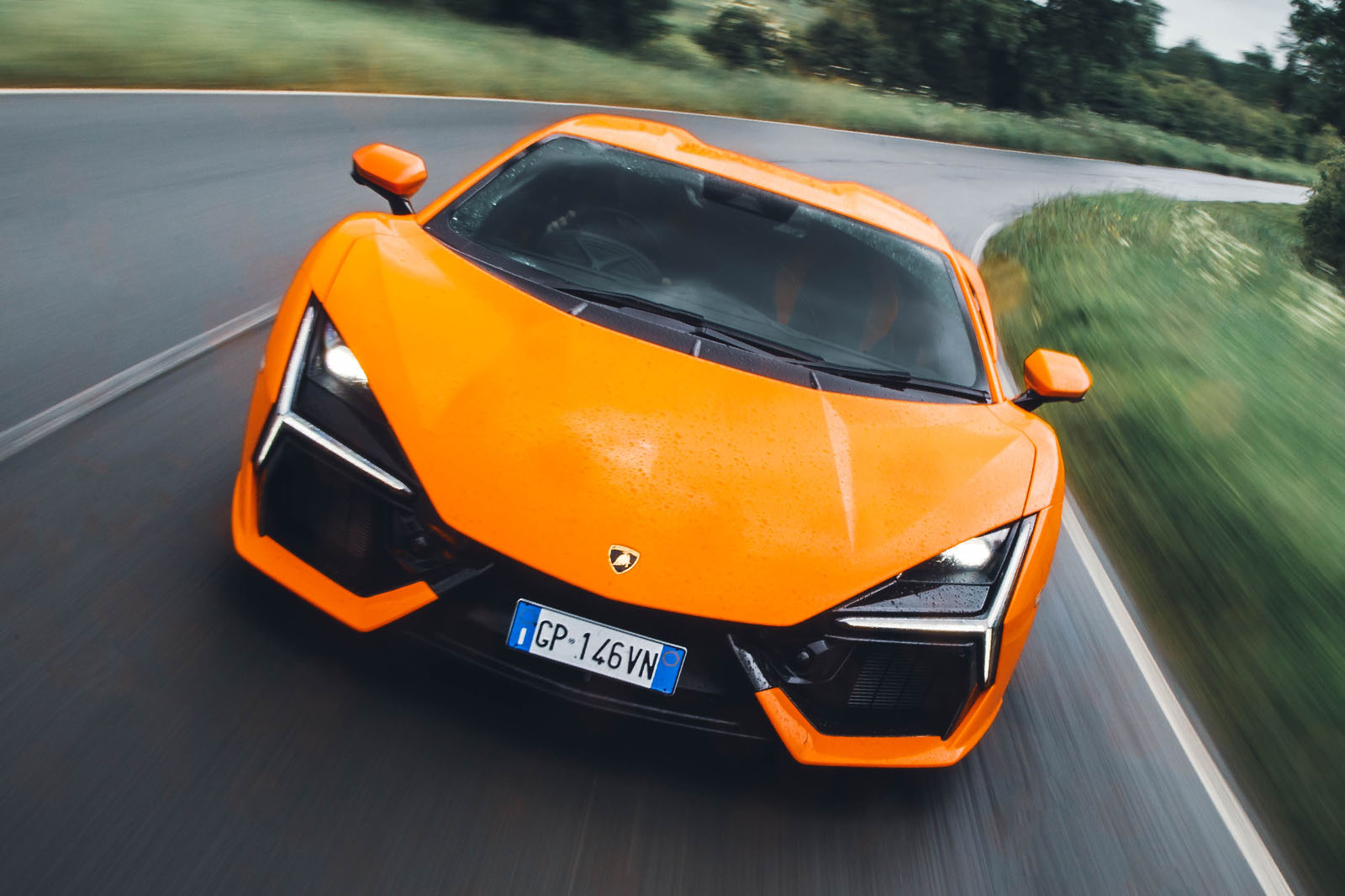The car’s various stability controllers are constantly using different systems to achieve the shared purpose of getting it into, through and out of corners as precisely and quickly as possible. Considering this is a near-1.9-tonne car in running order that can carry such monstrous speed, they do it very well indeed.
First, the electric motors work together to delicately juggle braking pressure side-to-side and front-to-rear to better stabilise the car as you slow before turn in; because, in that respect, they can do what callipers and discs simply can’t. Then the four-wheel steering system takes the lead to shrug off so much mass and inertia and rotate the chassis on a trailing throttle as you turn for the apex, like it ain’t no thing.
And then comes the asymmetrical torque vectoring under power. As the V12 drives the rear axle onwards on exit, so the controller for the front motors biases the electric torque to the outside front tyre, keeping the chassis’s cornering posture neutral and its line true.
Before you know it, you’re right where you planned to be, hurling yourself into the middle distance all over again, having benefited from all of that clever stuff without ever really knowing any of it was going on at the time.
Unlike in the Ferrari SF90 Stradale, there’s no extra weight or corruption to the steering and no sense of intrusiveness in the power delivery. Instead of a fast but closely managed, slightly contrived way around a corner, the Revuelto grants you a remarkably natural- and intuitive-feeling one. It would be really eye-opening if it weren’t so matter of fact.

On the road in the UK
So how does the biggest, most powerful Lamborghini in history feel on a cold, damp B-road?
Confoundingly usable. No, really. It’s no Alpine A110, of course, but neither is it simply a point-and-squirt supercar that relies on cross-eyed straight-line speed to generate excitement. The Huracán-esque sense of cohesiveness that was evident when pottering at town speeds is magnified as you tap into the Revuelto’s effectively bottomless reserves of pace. The wheelbase is 80mm longer than that of the Aventador, but it somehow feels considerably shorter, so keen is the handling. The new car’s rear-axle steering surely has something to do with this, but I wouldn’t be surprised if much of it is also down to the fact that the composite-rich chassis is quite a bit stiffer.
There are fleeting moments when said chassis’s underlying electronic complexity is thrown into relief: an uncanny bit of rotation here, a flash of inconsistent steering response there. But the rest of the time, the car feels natural, trustworthy, up for some fun. It’s also underpinned by fine ride quality and deft vertical control, although the Aventador wasn’t bad in these respects either.
The result is that you’re soon pushing this car through corners with a precision that, yes, could be achieved with the Aventador, but not without serious seat time and familiarity. The Revuelto is a more natural driver’s car, even if the steering lacks a touch of its predecessor’s communication of grip levels and the road surface.
The steering wheel itself is a peach. It has a slim, firm rim of the ideal diameter and comfortable mouldings at nine and three o’clock. And the gearshift paddles: they’re trademark Lambo, which is to say preposterously, brilliantly… big.

Oh, and the gearbox. My, oh, my. This new dual-clutcher gives away some pantomime and engagement compared with the old automated manual ISG ’box, but having shifts during which the flow of torque isn’t entirely interrupted completes the flagship Lamborghini’s evolution from charming bruiser throwback to something much closer to the bleeding edge of supercardom.
Source link
#Lamborghini #Revuelto #Review #Autocar



